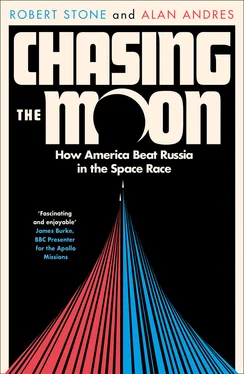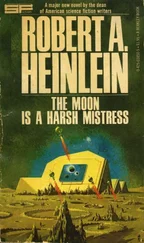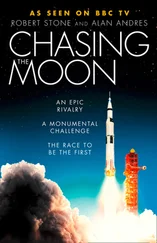The Rocket into Interplanetary Space appeared at a moment when many Germans were hungry for something bold, dynamic, and modern to restore the nation’s pride, following the defeat in World War I. The 1920s were a time of experimentation in art, film, and architecture and the arrival of new consumer technologies like radio, air travel, and neon lighting. The speed, power, and streamlined design of rockets became associated with a future of exciting possibilites. Less than four years after the publication of Oberth’s book, the Verein für Raumschiffahrt—or Society for Space Travel—was formed in Germany, and it soon became the world’s leading rocketry organization. It published a journal, held conferences, and conducted research experiments. But the stunts of Max Valier, one of the society’s founders, were what drew the greatest media attention: He strapped himself into a rocket-powered car and hurtled down a racetrack, trailing a cloud of smoke and flame. Such daredevil exploits proved to be an effective way of generating publicity but did little to boost the society’s scientific reputation.
Not long after the society’s founding, the noted Austrian-German filmmaker Fritz Lang approached it for technical assistance in connection with his forthcoming science-fiction space epic, Frau im Mond (Woman in the Moon), a follow-up to his international hit Metropolis. Lang hired Oberth, the society’s figurehead president, to be the film’s technical adviser. The film’s studio also engaged Oberth to build a functioning liquid-fuel rocket to promote the movie’s premiere, a project that, despite providing the society needed research-and-development money, was unsuccessful.
Albert Einstein and other scientists were among the celebrities who attended the film’s opening, but the only rocket to be seen that night was the one that appeared on the screen, created by the studio’s special-effects department. Although Frau im Mond wasn’t a critical hit, it was historically important for introducing the world’s first rocket countdown. Fritz Lang created it as a dramatic device to instill suspense in the final moments before the blastoff. It was such an effective way to focus attention and convey the sequence of procedures prior to liftoff that rocket engineers around the world immediately adopted it.
Meanwhile, in the Soviet Union, reports of Goddard’s moon rocket and Oberth’s scientific monograph prompted Russian space enthusiasts to stake their country’s claim by recognizing that Konstantin Tsiolkovsky had been the first to mathematically publish the rocket equation. Tsiolkovsky was in his mid-sixties when he received his vindication, and it coincided with a brief and bizarre moment of space-travel mania. After the First World War, revolution, and a civil war, Russia was in the throes of change, as audacious and provocative new ideas permeated the culture; among them was a renewed interest in utopian Russian cosmism, and a desire to explore new worlds. One of Tsiolkovsky’s leading Soviet advocates rallied followers with the slogan “Forward to Mars!”
In 1924, Russian magazines and newspapers reported that Goddard was about to shoot his rocket to the Moon or, in fact, may have already done so. Many Russian readers assumed that colonizing the planets was imminent. At space-advocacy lectures and public programs—including one with a crowd so keyed up that a riot nearly took place—curious attendees demanded to know when flights to the Moon and planets would commence and where to volunteer to be among the first settlers. But after learning that trips to the planets were at least a few decades away, the crowd dispersed in disappointment. In Moscow, an international space exhibition attracted twelve thousand visitors, and a Russian Society for Studies of Interplanetary Travel was founded. But Stalin’s rise to power and the beginning of the Five-Year Plan brought an end to Russia’s short experimental post-revolutionary sojourn. Despite his new fame at home, Tsiolkovsky received little recognition abroad.
Goddard’s reticence for publicity may partly account for the reason that, unlike in Germany and the Soviet Union, no comparable rocketry fad occurred in 1920s America. Instead, a different and more long-lasting phenomenon, which proved influential for the emergence of the space age, arose in the United States: the publication of the first popular science-fiction magazines. In 1926, Hugo Gernsback, an immigrant who had built a business issuing cheaply printed magazines about electronics and radio, introduced Amazing Stories, a specialty-fiction publication for which he coined the term “scientifiction.” Not long after, Gernsback hired a young technical writer named David Lasser to serve as the editor of a new publication, Science Wonder Stories. Lasser, the son of Russian immigrant parents, had enlisted in the Army and experienced combat during the First World War by the age of sixteen. Following months of hospitalization due to the injuries he sustained in a poison-gas attack, Lasser used a disabled-veterans scholarship to attend and graduate from the Massachusetts Institute of Technology. Avid readers noticed that, shortly after Lasser’s name appeared on the masthead of the Gernsback magazines, their literary quality improved significantly.
Lasser had become intrigued by press accounts about Goddard, Oberth, and Germany’s Verein für Raumschiffahrt, and in April 1930 he and fellow New York science-fiction writers and editors formed the American Interplanetary Society. Much like the Verein für Raumschiffahrt, its American counterpart aimed to stimulate awareness, enthusiasm, and advocate for private funding of rocket research—while also expanding the readership for Gernsback’s magazines. Goddard informed Lasser that he approved of the American Interplanetary Society’s mission but abstained from becoming a member. The Clark University professor apparently feared that if it were known he associated with science-fiction enthusiasts, research grant donors might question his judgment and reluctantly withdraw their support.
In one of his first roles as the president of the American Interplanetary Society, Lasser presided over a special event held at New York’s American Museum of Natural History: a lecture about space travel, featuring one of the first American screenings of Fritz Lang’s Frau im Mond. Though a modest-sized audience had been expected, nearly two thousand curious New Yorkers converged on the museum. The only way to accommodate the sizable audience was to add a second screening later that evening.
David Lasser had concluded that there was a need for a book written for curious readers that explained in realistic, accurate, but understandable scientific terms the fundamentals of rocket science, why constructing an operational vehicle should be attempted, and what piloted space travel would mean to humanity. Lasser believed that once humans departed their home planet, a philosophical and political shift would occur throughout the world as people began to perceive the Earth as a small, fragile, isolated sphere in the emptiness of space. This change in thought, he concluded, would lead to the erosion of the dangerous nationalistic and tribal divisions that had brought about the recent carnage of the First World War. He wanted his book to provide the fundamental scientific concepts while forgoing the higher mathematics that might intimidate some readers.
Researching the book, Lasser gathered recently published technical papers from leading scientific journals and corresponded with rocketry activists around the world. He wrote it during the immediate aftermath of the Wall Street Crash, a time when he and many other Americans hoped for a better future. Lasser’s optimism colors his imaginary account of the moment when news from the first lunar space travelers is received on Earth: “We learn that wild excitement prevails all over the globe…. We cannot but feel now that this journey has served its purpose in the breaking down of racial jealousies.” Elsewhere he writes that space travel will result in a new planetary outlook, the realization that “the whole Earth is our home.”
Читать дальше












